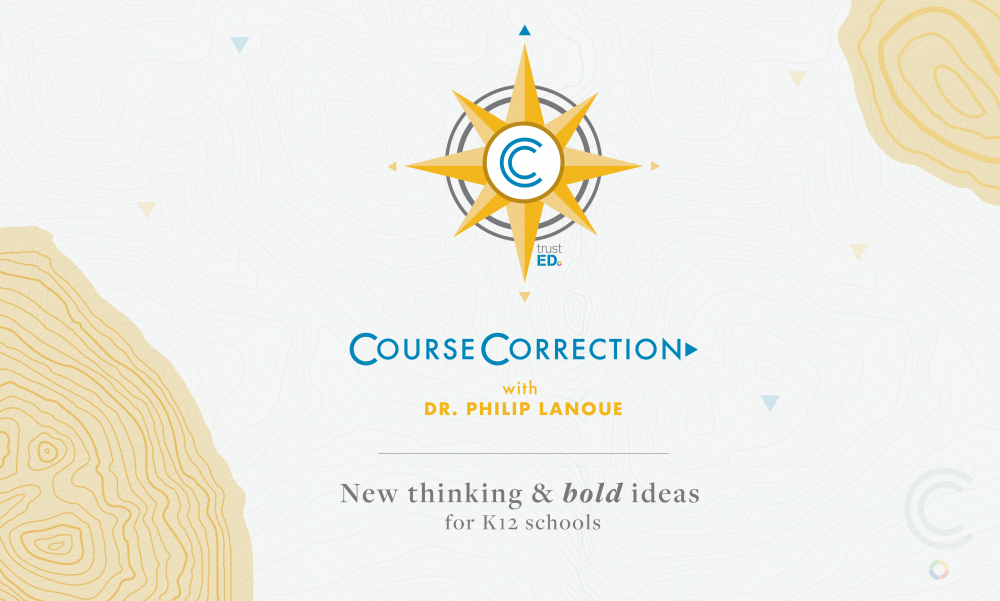The CROWD at the center of school district strategic planning and school innovation? Who would have thought?
Recently I visited Minnetonka Public Schools (MPS) in Minnesota to speak with educators about innovation as part of a project with AASA and the Successful Practices Network (SPN) to identify and document innovative practices by schools and districts across the country.
What I saw is something that I have never seen in schools. The experience offered a powerful glimpse into how schools and districts are starting to think differently about strategic planning and community engagement: Social media and crowdsourcing in schools!
Taking a page from innovative businesses that recognize the power of giving their employees a strong voice, MPS leverages the reach of social media and the power of community voice in its strategic planning efforts.
Hearing every voice
The idea came about when the MPS school board and its superintendent determined that the traditional top-down strategic planning model was no longer meeting the district’s or its community’s needs. That’s when they turned to their biggest asset—their employees—for help. Instead of dictating change, MPS decided to ask members of their organization to help them create it.
School leaders wanted to know how the district could:
- Improve academic achievement
- Engage all students
- Ensure all students are prepared with 21st century skills
- Leverage assets to ensure fiscal responsibility
Changes to the traditional strategic planning process, viewing social media as an asset rather than a nuisance—this is the kind of stuff that rattles traditional organizations because it inverts the system.
Want more great thought leadership? Sign up for the TrustED newsletter.
Social media and organizational expert Jamie Notter explains how the balance of power shifts when organizations take a social approach to engagement.
“Social media actually represents a significant shift in the balance of power—away from institutions and towards individuals. Social media gives all of us—those who Clay Shirky refer to as ‘the people formerly known as the audience’—the power to create, share, learn, collaborate, and solve problems…”
This shift makes an incredible difference, because it’s no longer about leaders collecting recommendations, then making isolated decisions about which ones will work. Rather, it’s about getting the organization engaged in a process where ideas are supported, developed, tested, and implemented.
Eric Schneider, MPS’s associate superintendent, explains the district’s approach to crowdsourcing innovation:
“We believe public schools can rise to the challenges they face, and we think innovation has an important role to play in helping them do so. When we refer to innovation, we don’t have in mind a ‘quick fix.’ And we’re mindful of the fact that some quarters of the educational system are feeling ‘innovation fatigue.’ Very often, past innovative efforts have failed to engage teachers and others who work most closely with students-–the very people who often have the most insight and expertise relevant to improving the way schools work. But as tempting as it might be to give in to innovation fatigue, we think school systems need to keep exploring avenues for innovation and to share ideas about innovation programs that manage to bring communities together for the benefit of students.”
Schneider outlines five core principles that have produced positive crowd-sourcing results across the district:
- Start with teams and tools. Successful organizational innovation requires input and cooperation from a wide variety of people. So when launching a new innovation, it helps to assemble teams of people from different levels of the organization as well as people with different roles and backgrounds. The power of teams informs the whole process, because implementing and refining specific initiatives requires ongoing listening and guidance.
- Enable staff to identify and champion improvements. Often, when innovations fail, it’s because they are “imposed” on an organization by people at the top or people on the outside. District-wide innovations are likely to be more successful when they focus on empowering district employees to identify and lead the change. This approach leverages the “on-the-ground” knowledge of people who have intimate experience working within the district. These people are often in the best position to understand students’ and families’ specific needs.
- Screen and test new ideas. Very few innovative ideas are born perfect. Many new ideas prove to be flawed or unworkable. Others require significant refinement before they achieve their intended results. District staff should actively participate in evaluating new ideas and help identify those that merit further development. For the best ideas, it helps to design small-scale tests to clarify how well the idea might work in practice.
- Celebrate effort along with success. For an innovation program to be successful, team members need to feel comfortable proposing new ideas. As ideas are vetted, it’s important to continually validate all efforts, including those that turn out to be less successful. Many people will find that their ideas don’t get traction on the first or second try. But those same people may still have great ideas to contribute downstream.
- Engage the larger community in the innovation journey. Innovation programs represent an opportunity for school districts to involve a wide range of stakeholders, including local companies and nonprofit organizations and area colleges and universities. These organizations serve as a source of “innovation coaches”–-i.e., individuals who help to develop and assess particular ideas. They may also be willing to provide space, materials and other support to the district’s innovation efforts.
Redefining the process of innovation through the CROWD is powerful because it builds new ideas and champions from inside the district.
Is your district using crowdsourcing to innovate? Tell us how in the comments.
